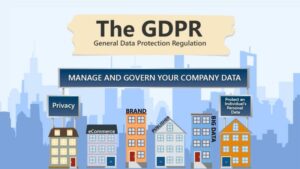Yes, There’s Still Time to Protect your Data Under GDPR
Recent suggests that almost half of UK businesses are preparing to receive non-compliance penalties, with many owners having already set aside funds in anticipation of a fine. The research (conducted by data privacy firm, Ensighten) highlights a worrying amount of unpreparedness surrounding the new legislation and the additional responsibilities it will bring for organisations who […]
Five tips for tackling gender bias in your organisation
Extensive research has shown that in terms of intellectual capabilities, there are no significant differences between men and women. Yet it’s a fact that certain professions are overwhelmingly dominated by one gender or the other and that women are under-represented in senior roles.
Bribery whistleblowing policy template

The Bribery Act 2010 defines bribery in a very broad way, namely as a gift or donation intended to “induce a person to perform improperly, a relevant function or activity”. When it comes to any compliance matter, it is important to install a culture whereby all staff feel comfortable raising any concerns they may have, […]
The role of online learning courses: How to learn?

A supermarket chain relied on existing staff to show new delivery drivers how to use powered pallet trucks safely. One new driver had been shown how to use a pallet truck at one site, but when he came across a different type of pallet truck at another site he didn’t understand how to stop it […]
General Data Protection Regulations (GDPR)

“The new General Data Protection Regulations (GDPR) will give us one of the most robust, yet dynamic, set of data laws in the world.” UK Digital Minister, Matt Hancock. Data Protection is changing and soon. Will your organisation be ready to comply with these significant and extensive changes? You have probably heard the term GDPR […]
On-demand GDPR webinar – Data Protection Impact Assessments (DPIAs)

With GDPR day less than a month away, Director of Course Development Nick Henderson continued to help organisations prepare for the new EU wide regulation. During the webinar, Nick guided listeners through the process of conducting a DPIA. He also answered questions on the topic of DPIAs and gave guidance on next steps to those […]
British Overseas Territories must adopt public registers of beneficial ownership

What is a public register of beneficial ownership? A public register of beneficial ownership is a centralised database or registry that contains information about the individuals or entities that ultimately own or control a company or legal entity. It aims to increase transparency and combat illicit activities such as money laundering, tax evasion, and corruption. […]






